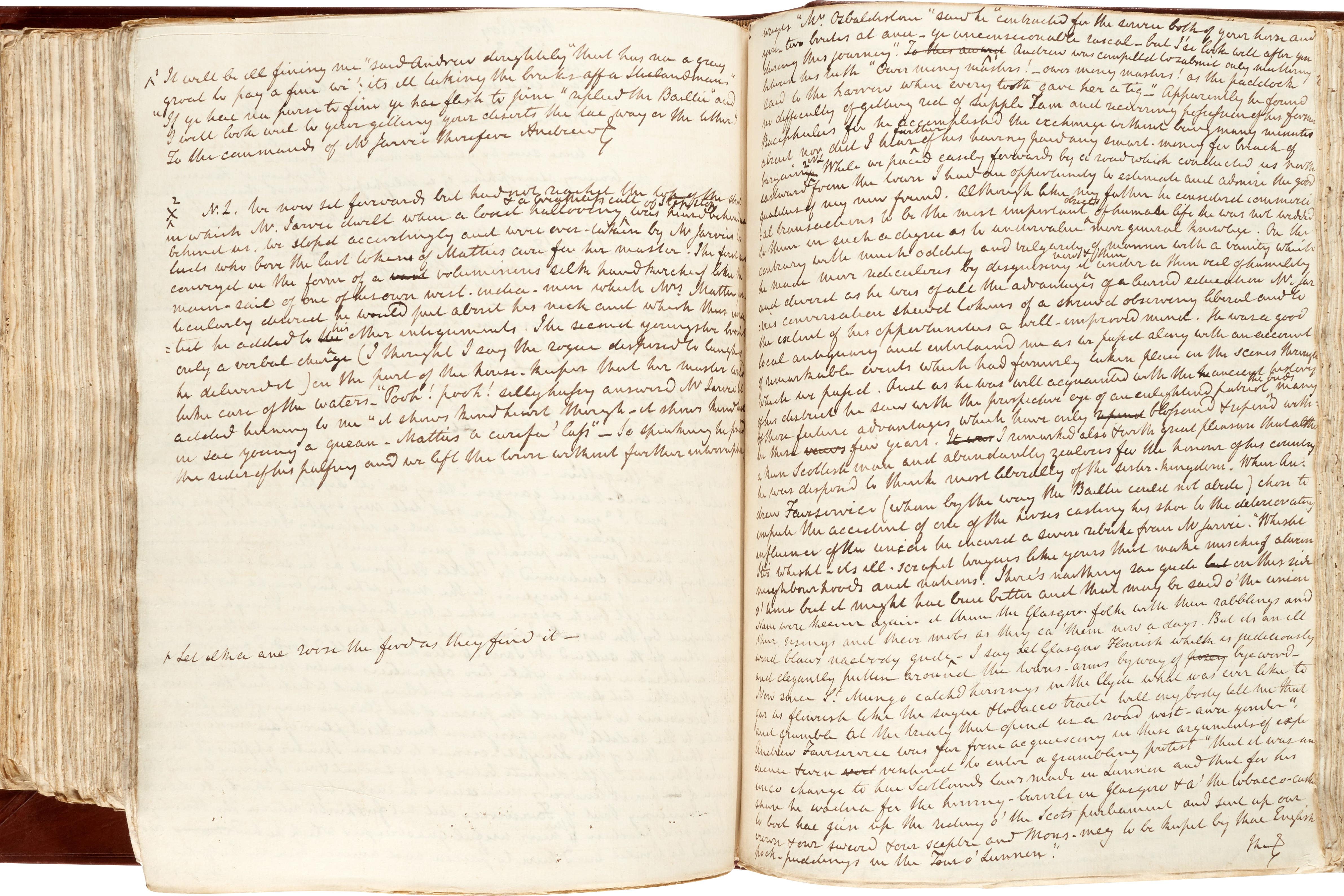Sir Walter Scott’s Rob Roy manuscript going on show at National Library
The National Library of Scotland display later this year will mark the first time the manuscript has been shown to the public in at least a century.

Your support helps us to tell the story
From reproductive rights to climate change to Big Tech, The Independent is on the ground when the story is developing. Whether it's investigating the financials of Elon Musk's pro-Trump PAC or producing our latest documentary, 'The A Word', which shines a light on the American women fighting for reproductive rights, we know how important it is to parse out the facts from the messaging.
At such a critical moment in US history, we need reporters on the ground. Your donation allows us to keep sending journalists to speak to both sides of the story.
The Independent is trusted by Americans across the entire political spectrum. And unlike many other quality news outlets, we choose not to lock Americans out of our reporting and analysis with paywalls. We believe quality journalism should be available to everyone, paid for by those who can afford it.
Your support makes all the difference.Hidden from all but a few scholars and saved from being sold off at auction, Sir Walter Scott’s manuscript of his novel Rob Roy is set to go on show to the public for the first time in at least 100 years.
Written in the hand of one of the most famous Scottish writers, the manuscript of Sir Walter’s historical novel, published in 1817, will be on display at the free Treasures of the National Library of Scotland exhibition in Edinburgh from March.
The manuscript was among many literary treasures held in the Honresfield Library, a private collection formed in the 19th century by Rochdale mill owner William Law, and whose contents were kept hidden from all but a few until now.
The National Library of Scotland said the collection has been largely inaccessible for the last 80 years, and has not been seen by the public for at least a century.
The items were set to be sold off at auction by Sotheby’s, but after fears were raised that they would be returned to private hands or even lost to a foreign buyer, works by authors including Sir Walter, Robert Burns and Jane Austen were saved after a UK-wide collective of organisations stepped in.
The Rob Roy manuscript has a history of being bought and sold, with its ownership often dependent on how wealthy the Scott family were at any given time.
Ralph McLean, manuscripts curator at the National Library, said: “When Sir Walter Scott and his business partners encountered financial difficulties after the crash of 1826, a number of his manuscripts were later auctioned off to reduce the debt incurred.
What’s interesting is that Rob Roy himself isn’t a central character in the novel – he only appears sporadically throughout. It was actually Scott’s publisher who suggested the title.
“Rob Roy was sold, but was eventually bought back by Scott’s son-in-law John Gibson Lockhart, and returned to the Scott family in the mid-19th century.”
William Law had formed a close relationship with the Scott family, and was able to buy direct from them. So, when the Scott family fell on hard times, he snapped the manuscript up and added it to his own private library.
When Rob Roy was published, with a for-its-time large first run of 10,000 copies, Sir Walter was writing anonymously, but the book was marketed as “written by the author of the Waverley novels”.
With these being extremely popular, Rob Roy sold out. As one of Sir Walter’s most popular novels, it has never been out of print in the more than 200 years since it was first published.
The novel, first published by Archibald Constable in Edinburgh, is set at the time of the 1715 Jacobite rebellion and is narrated by the character Frank Osbaldistone, who encounters the Scottish outlaw and folk hero Rob Roy MacGregor on his trip to Scotland.
Mr McLean said: “What’s interesting is that Rob Roy himself isn’t a central character in the novel – he only appears sporadically throughout. It was actually Scott’s publisher who suggested the title.
“The depiction of Rob Roy MacGregor as a character in the novel undoubtedly added to the myths surrounding this person, as has subsequent depictions since in various media.”
The Honresfield Library is now called the Blavatnik Honresfield Library after its major donor.
Subscribe to Independent Premium to bookmark this article
Want to bookmark your favourite articles and stories to read or reference later? Start your Independent Premium subscription today.